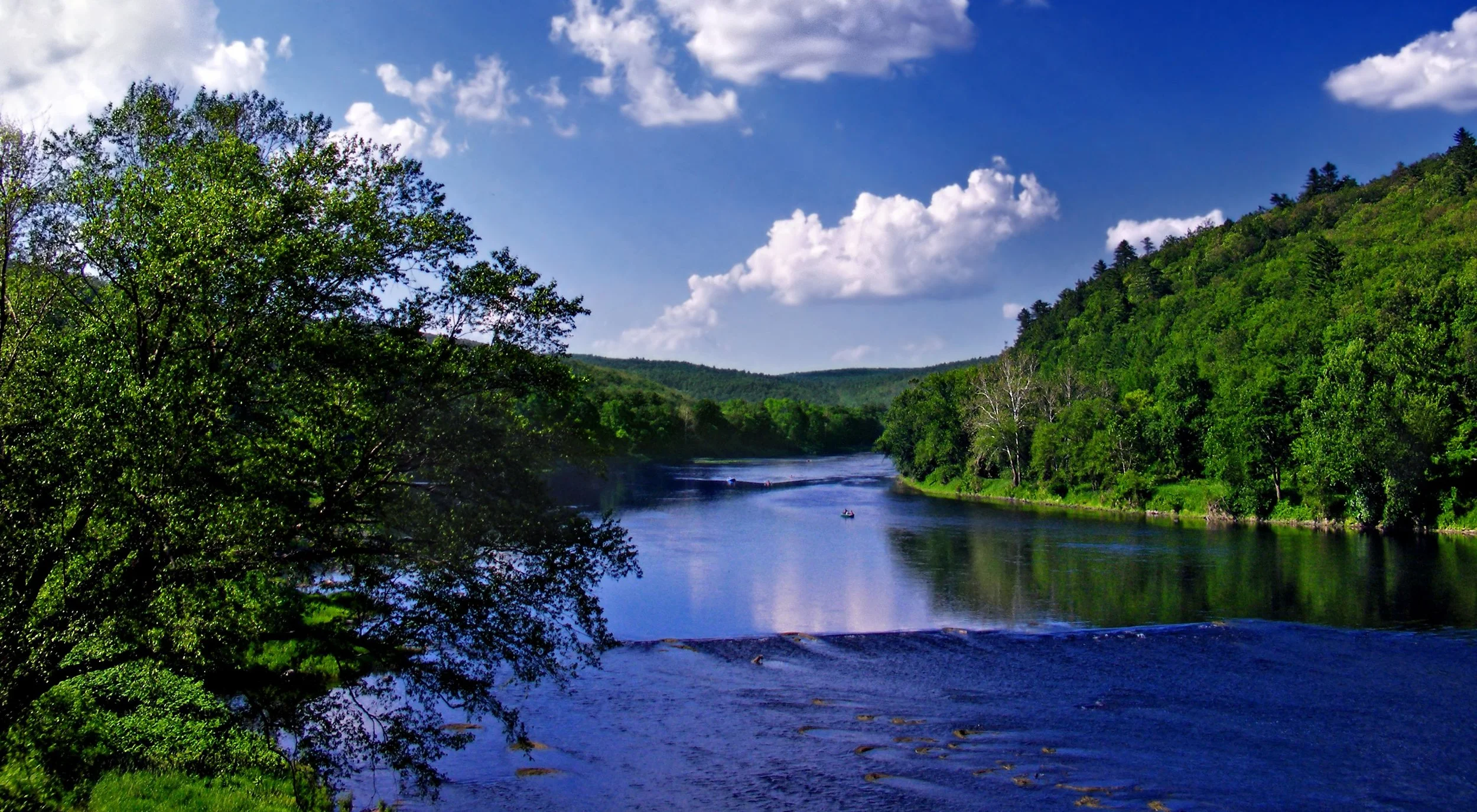By Meagan Schaefer & Ellen Underwood
Inspired by “Imagine a Day Without Water”, organizations within the Delaware River Basin come together every year on October 18 for a social media day of action around the Clean Water Act anniversary in order to raise awareness about the essential resources the Delaware river provides.
Signed into law 50 years ago on October 18, 1972, the Clean Water Act became the nation’s foremost law for protecting the irreplaceable life-giving resource of clean, accessible water. The Act’s pollution control programs and surface water protections work towards ensuring we don’t have to go a day without the water, the wildlife, or the habitat of the Delaware River Basin.
Before the Clean Water Act, about 2/3 of U.S. waterways were unsafe for swimming or fishing because untreated waste flowed directly into rivers and lakes. The Delaware River was one of many rivers that were extremely polluted and unsafe. Now 50 years later, the Clean Water Act has kept billions of pounds of sewage, chemicals, and trash out of waterways across the Delaware River Basin and the entire United States. Many urban waterways, like the Delaware River, have gone from wastelands to centers of redevelopment and activity.
Photo source: Friends of the Upper Delaware River
Celebrated on social media and named #DayWithoutTheDelaware, October 18 is an opportunity to better understand our reliance on the Delaware River Basin and highlight the importance of protecting the future of the Delaware.
#DayWithoutTheDelaware urges people to think about how they interact and rely on water in their daily lives, in order to foster a deeper commitment to protecting and speaking out for clean, accessible water.
As you go throughout your day, imagine what it’d be like to have a day without the Delaware, when water is completely inaccessible. There would be no water to drink, to prepare meals, to bathe or do laundry. Firefighters can’t put out fires, farmers can’t water their crops and businesses would close.
Source: Delaware River Basin Commission
Over 13 million people in NY, NJ, DE, and PA rely on water from the Delaware River Basin for basic needs. This resource is essential, invaluable, and in need of more investment by all of us.
What would a day without the Delaware River Basin look like?
Without water from the Delaware River Watershed, farmers in NY, NJ, PA, and DE wouldn’t be able to produce the crops that end up on our dinner plate. Water keeps crops alive! Farmers and agriculture couldn’t go a #DayWithoutTheDelaware.
Not only does the Delaware River Basin provide water for people, wildlife, and farms - it also supports about 600,000 jobs across various industries. Without the Delaware River Basin, more than $20 billion in economic activity would be lost. A #DayWithoutTheDelaware would mean economic bust for our region!
Without the Delaware, hundreds of wildlife species would have no place to call home and no food to eat. The Delaware River supports year-round fish populations, as well as those returning to spawn, such as the American shad. Bald eagles, which depend on fish for food, reside throughout the basin from the river's New York headwaters to the Delaware Bay.
Bird species: Red Knot
Birds rely on the Delaware River Basin and couldn’t go a #DayWithoutTheDelaware! The basin provides habitat and food to 250+ migrating bird species because it’s located in the Atlantic Flyway. The Delaware Bay is the number one breeding location for American horseshoe crabs, which endangered red knots rely on for food.
Without the Delaware River Basin, we’d be missing out on outdoor recreation such as kayaking, fishing, and swimming. Not only does the Delaware River Basin bring clean water to our tap, it also brings tourists, sportspeople, and recreation enthusiasts to our region, which boosts the economy.
Ensuring No One Experiences a Day Without the Delaware River Basin
Despite the Clean Water Act creating impactful improvements for our waterways, some communities don’t need to imagine a day without clean water. The lack of access to the benefits of a healthy Delaware River Watershed is still a daily reality for many people. Weakened protections and inequitable investments result in health outcome disparities, lack of access to outdoor recreation, stunted economic opportunity, disproportionate impacts of climate change and much more.
Integration of the following into the CWA are just some of the key ways to expand access to clean water, ensuring that in the next 50 years no one has to go a day without the Delaware:
Policy development is inclusive, transparent, and equitable
The voices and solutions of the communities most impacted by ecological debt* are centered
Ensuring the CWA is instituted and applied equitably
Prioritizing clean water investment in BIPOC, low income, and other disproportionately affected communities
Prioritizing restoration in communities most impacted by pollution
Integrating indigenous knowledge into planning and restoration
Ensure affordability of water resources
Improving access to fishable swimmable rivers
Creating access to inclusive, welcoming water recreation
Investing in flood, drought, and climate resilience
prioritizing prosecutions of CWA violations affecting BIPOC and other disproportionately impacted communities
*experiencing the highest impacts of climate change and environmental degradation but not being responsible for causing these impacts or accelerating climate change. - Jessica Hernandez PhD, “Fresh Banana Leaves”
Meagan Schaefer is the Outreach & Communications Manager for the Coalition for the Delaware River Watershed. Ellen Underwood is the Engagement Coordinator for the Coalition for the Delaware River Watershed.





